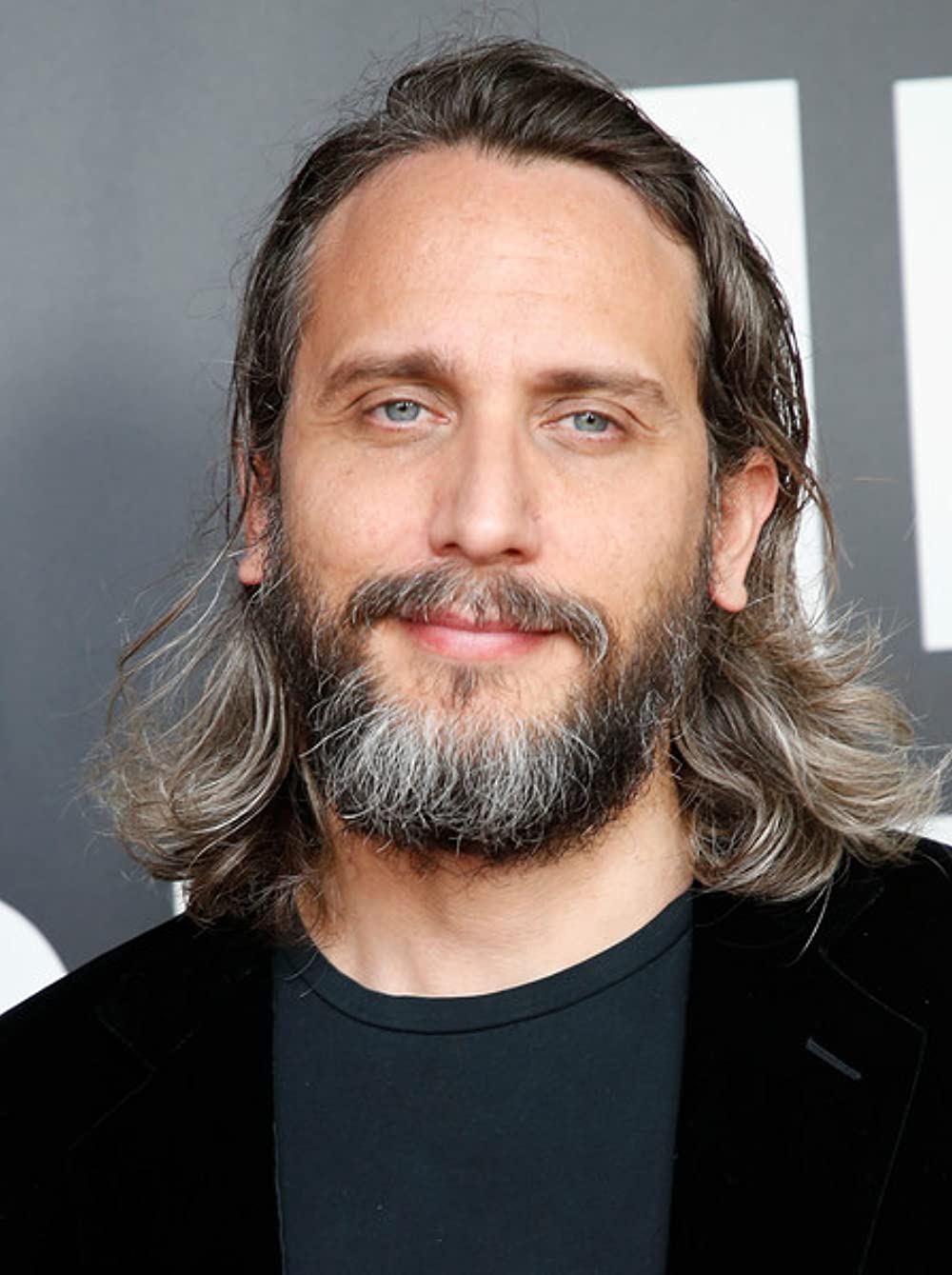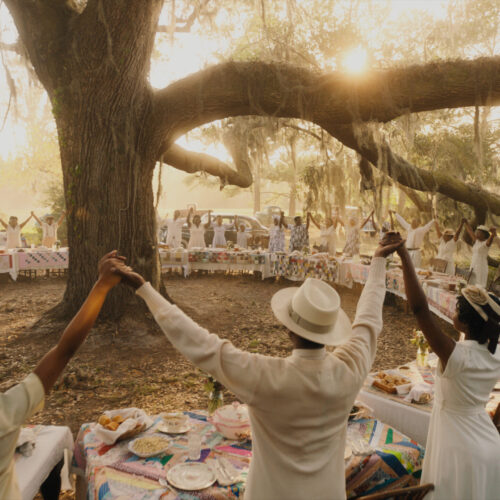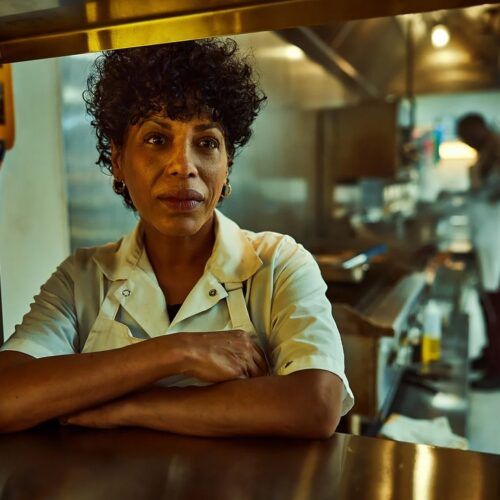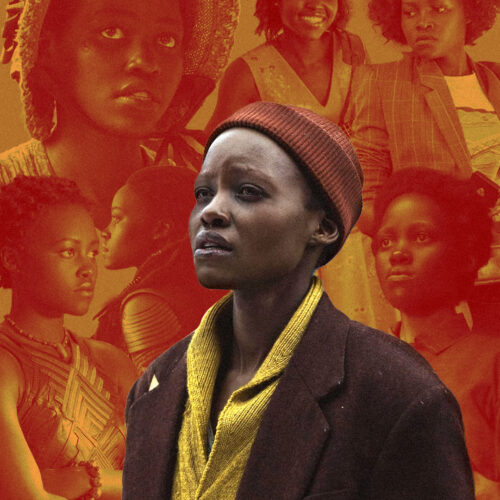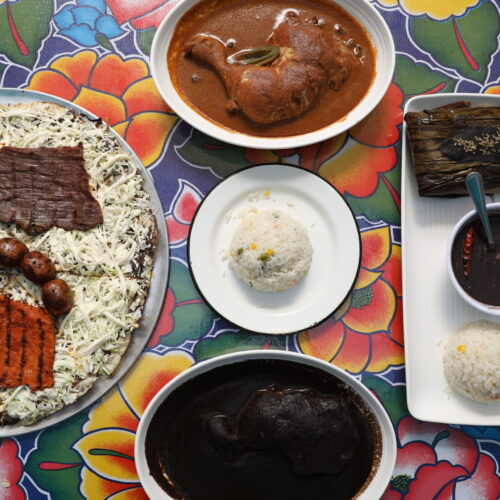This isn’t the first time Fede Álvarez and I have met. We crossed paths nearly one decade before, at a fan-only screening of his “Evil Dead” remake in Tempe, Arizona. At the time, he was promoting his feature-length debut, and I had decided to pursue a career in film criticism. “I remember that screening,” he told me, recalling a story of a particularly passionate fan in the audience who approached him after the screening to ask a question that, to most, would seem completely absurd.
“We were doing a Q&A after the screening,” he says. “When they decided to wrap it up, I saw a big guy in the back who’d been raising his hand, but no one was handing him the mic.” Álvarez smiles, with a hint of nostalgia in his eyes. “That guy looked like a true horror fan. Heavy metal shirt, big hair … probably what I would look like if I didn’t end up working in Hollywood.” He recounts to me how the fan, sitting just two rows behind me at the screening, made his way to the front of the room and asked a question that reminded Álvarez why he loves to make movies.
The film’s post-credits sequence reveals a surprise cameo: “Evil Dead” mainstay Ash Williams played by Bruce Campbell in the original trilogy of films. “He asked me, ‘The guy after the credits — is that Ash or Bruce Campbell?’” Almost ten years later, Álvarez still gets a kick out of that story, acknowledging that it’s inherently a goofy moment, but a poignant one nonetheless. “The audience, they see it as real, you know? They’re pure. They believe in these mythologies. They know it’s a movie, but it doesn’t matter.”
Álvarez sits coolly in his converted garage in Uruguay that doubles as a music studio and screening room and almost seems sheepish about his setup when I ask where he is, laughing a little bit to himself before he explains. “I play a lot with my Uruguayan friends here,” he tells me. “One of my buddies that I play with, Ryan Shields, did the Leatherface theme for the closing credits,” in Álvarez’s latest project, the latest installment of the “Texas Chainsaw Massacre” franchise, which premiered on Netflix in February.
Álvarez has helped define the last decade of horror filmmaking with original films like “Don’t Breathe” and its sequel, as well as the Apple TV series “Calls,” an audio-visual experience that put Álvarez’s strengths as a writer at the forefront. Most recently, Álvarez is set to write and direct a new “Alien” film for Hulu, which will debut as a standalone story produced by franchise creator Ridley Scott. Returning to the roots of his feature debut, a 2013 “Evil Dead” remake that satisfied longtime fans and newcomers alike, Álvarez recently co-wrote and produced Netflix’s “Texas Chainsaw Massacre,” a direct sequel to the 1974 original.
As a producer, Álvarez has employed many of the same people throughout his career. His writing partner Rodo Sayagues, for instance, has been with him since the very beginning, co-writing the 2009 short film that made the filmmaker a Hollywood prospect. “There’s something about working with people from your culture that feels homey, especially when I can bring people from Uruguay that I’ve worked with.” It’s a family affair, he insists, saying, “My DP, I’ve known him since we were in our early 20s. I try to keep the team that I’m really close with, and they tend to be people from back home.”
“Texas Chainsaw Massacre” sees Álvarez reteaming with Sayagues, once again, alongside Ricardo Diaz, the DP mentioned above whom Álvarez has been working with for more than two decades. Tobe Hooper’s original 1974 “Texas Chain Saw Massacre” established one of the most iconic characters in the genre’s history. In his approach to Leatherface, a character that many others have tried (and failed) to write compellingly, Álvarez asked himself a few important questions. “What is the essence of this thing? Why did it work so well at the time? What was special about it?”
Fully aware of the risks involved in tampering with the legacy of any beloved character — especially in horror, where diehards are particularly touchy about their favorite monsters — Álvarez tried not to let fan expectations get in the way. “It’s a challenge to be faithful to what people expect from the character,” he admitted, still focused on the idea that the audience is diverse. Álvarez has never been interested in pleasing everybody, especially in a franchise like “Texas Chainsaw,” which is tonally disparate and almost invites directors to bring something unique to the character. There is a stark difference in tone between Tobe Hooper’s original “Texas Chain Saw Massacre” and its slapstick sequel, which veers closer to comedy than horror for most of its runtime. “Some people might prefer the wackier takes like ‘Texas Chainsaw Massacre 2,’ and some people want him to be exactly like he was in the original,” he said.
Disregarding the pressures of audience expectations, which are often vast and contradictory, Álvarez found his way into the character by staying “faithful to the fact that [Leatherface] is a human being. Compared to the other iconic monsters of that generation like Michael Myers and Jason Voorhees, he’s the one that feels the most human.” The filmmaker is fully aware of how odd that might sound but can’t help but feel something like empathy for the way Leatherface’s senseless acts of violence can kind of make sense. “He can be scared and nervous and heartbroken,” Álvarez said sympathetically. For him and his collaborators, exploring Leatherface’s sensitivity wasn’t just a byproduct of the writing process but an integral part of how they decided to tell the story. When Álvarez and his team felt like they had cracked the essence of the character, “we at least had rules and a kind of path to follow.”
The new film follows a group of TikTok-like influencers who have set their sights on “revitalizing” — but really gentrifying — a small town in rural Texas, the same one where Leatherface happens to live with his elderly caretaker, the owner of a shuttered local orphanage. The film tackles the divide between “woke capitalism” and small-town conservatism, with Leatherface aiming at the millennial investors backing the influencer collective’s plans to revamp the local economy. “The cultural clash between the city and the country is just timeless. It’s not just about Texas. It’s universal,” Álvarez noted. “I’m from Uruguay, and it’s the same. The differences are the same,” referring to the global class division and accompanying political schisms that seem to permeate every aspect of our daily lives. “Leatherface represents the worst fears of the city folk. He’s the person you can’t negotiate with or talk to — he just hates them with all his heart.”
Between thinking up gory and inventive ways for Leatherface to destroy his enemies, Álvarez never lost sight of what makes the character, in his way, relatable. “He hates you because he’s scared of you because he doesn’t understand you. At certain points [in the original film], he seems to be more afraid of the kids than vice versa. He’s just reacting all the time.” Applying that philosophy to his take on the character, Álvarez notes, “It’s the same here. He’s been living this very secluded life for a long time,” he explains. “Then suddenly these people show up with handheld devices, and he’s never seen that in his life,” Álvarez adds with a laugh.
While the film’s events are larger-than-life, the isolated small town that Leatherface lives in is no Hollywood invention. “When you go deep enough into the countryside, you can find these kinds of micro societies and families that are completely disconnected from the city.” It’s rare to see the character removed from his rural setting, and Álvarez points out, “I don’t think Leatherface would work in the city. I mean, this is as urban as he’s ever been because at least he’s living on a main street. But it’s still an empty place that time has left behind.”
This newest “Texas Chainsaw” is characterized mainly by the conflict between red and blue, city and country. But a more major clash, the one between past and present, emerges as the story progresses. In a move reminiscent of David Gordon Green’s 2018 “Halloween” sequel, the newest “Chainsaw” installment sees the return of Sally Hardesty, the lone survivor of Leatherface’s killing spree in director Tobe Hooper’s original film. However, “Texas Chainsaw” deviates from expectations, once again, by having their reunion fizzle in anti-climax. “I truly believe that would be what would happen in reality,” Álvarez confesses, noting the fact that, when Sally and Leatherface finally come face-to-face, he has no recollection of who she is. “I thought it was grimmer,” he added. “The fact that Michael Myers is so obsessed with Laurie [Strode] almost makes it romantic.”
Of course, any discussion of this latest “Chainsaw” would not be complete without a mention of the film’s centerpiece sequence, a gloriously gory Leatherface killing spree that takes place in a neon-drenched party bus. It’s a near-flawless sequence, toeing the line between abject terror and cartoonish glee with ease. “That’s always the intention of horror. Even when terrible things are happening, you’re supposed to be giving the audience a good time.” Álvarez understands that finding this sweet spot is the key to the genre’s success. “That’s why we sometimes create dumb characters or stereotypes of high schoolers that everyone hated when they were in high school. It’s not a coincidence that those people die first.”
Like all great horror sequences, the sequence’s unrelenting barrage of blood and carnage was born from the writer’s frustrations. “Who doesn’t have, let’s say, mixed feelings on a generation of hipsters with their phones in their faces?” he says with a wicked smile. But with the same self-awareness that’s guided him through every one of his projects, Álvarez adds, “I would put myself in that [hipster] group on the bus. I’m more like them than like Leatherface. And if you are part of that group, you want to believe you’re not.”
Stylistically, the party bus sequence is a masterclass in disorientation. The scene is drenched in a harsh neon blue that refuses the viewer an opportunity to gather their bearings. For this, Álvarez humbly cedes all credit to his collaborators. “[Director] David Blue Garcia and [Director of Photography] Ricardo Diaz really came up with that together, making the scene really cold in a way that the blood turns black.” However, the co-writer and producer insists his most significant contribution came in the editing bay. “The part where I participated more was in post-production and finding that perfect balance of almost trying to reach the absurd. A place where, if you went even an inch further, it would be a comedy.”
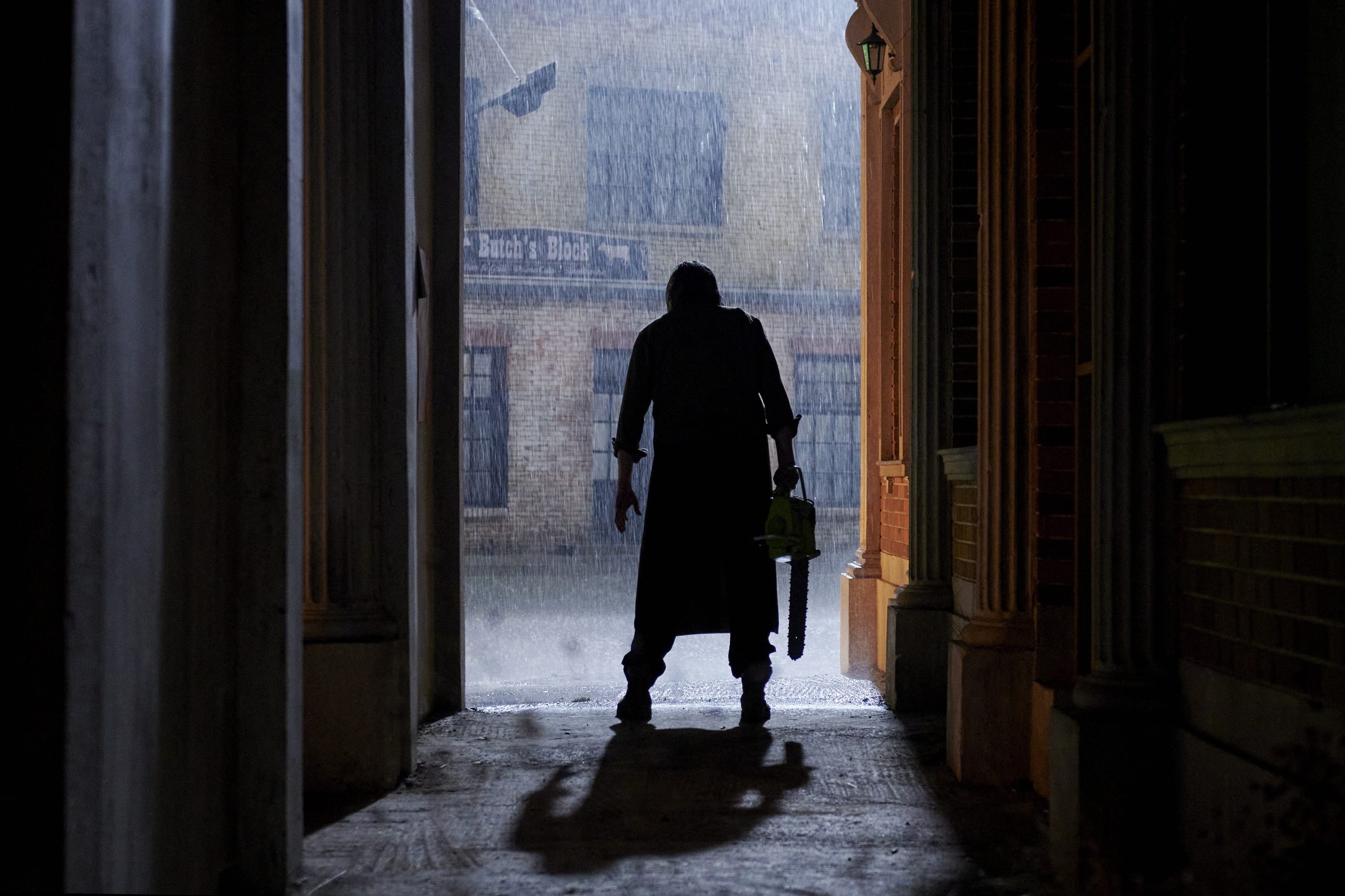
“Texas Chainsaw Massacre” Cr. Yana Blajeva / ©2021 Legendary, Courtesy of Netflix
Álvarez thrives in the high-stakes environment of maintaining the balance between torture and comedy, even though he knows the risks more than most. “You want to be standing on exactly that line because if you go over, it’s a comedy, but if you stray too far from that line, it just becomes, you know, terrorism.” They’re risks worth taking for Álvarez, who can’t resist the feeling that comes when those risks pay off. “I’ve seen this many times in the theaters watching my own films. Two people are sitting right next to each other — one of them is terrified, hiding in their hands, and the other one is just having a blast and laughing and eating popcorn. To the exact same scene,” he says gleefully.
It’s not just the Uruguayan film scene that Álvarez finds intriguing. When it comes to working within the genre, the filmmaker feels that bringing Latin American creators into the mix only strengthens the work. “Working with my co-writer and my DP, we realized that the kind of storytelling we’re used to in Latin America is different from the standard American story.” When he and his team first got the call to come work in the US, Álvarez knew he only had one chance to make a first impression. “Something I didn’t want to do was to come to Hollywood as a Latino director to make exactly the same movies the American directors were doing. It would have been completely pointless.” Although Álvarez is known for his reimaginings of established franchises, they are remakes in name only, capturing the essence of the story while taking them in new and uncharted directions.
So how does Álvarez define that classic American story? “Something I recognize in all of my movies is, there are definitely bad guys, but there are no good guys. There’s no Captain America. That’s a very American concept.” He continues, comparing that archetype to his roots, “In Uruguay, if a character shows up and presents themselves like that, we immediately assume they’re lying and full of s—.” Referencing how these dynamics impact horror, specifically, Álvarez said, “You see the classic survivors in horror movies, like ‘The Virgin,’ the one that did everything right. I think in Latin American culture, we see that as a reason to be suspicious.”
More than just breaking the mold of American genre filmmaking, Álvarez faces adversity on the business end, as well, where executive notes and test audiences send some of the most original and daring studio projects to the chopping block. “When you’re watching a movie or listening to a song, and you think, ‘This was written for me!’ That’s what we’re trying to do. And to do that, you can never see it as a business.” Álvarez explains that, even after the success of “Evil Dead,” he had to fight for his original works to find financing. “Look, when we made ‘Don’t Breathe,’ nothing sounded as non-commercial [as] that film did on paper.” Álvarez stuck to his guns, though, because he was “pretty sure there was at least one guy out there who was gonna love it. But then, you know, it was number one at the box office for two weeks in a row. People loved it.”
The key to Álvarez’s continued success is that he’s never lost sight of the idea that movies are ultimately about community. “You have to paint the village,” he said. “You might think no one’s going to like it, and then you realize how many people like you are out there.”
“Texas Chainsaw Massacre” is streaming now on Netflix.
